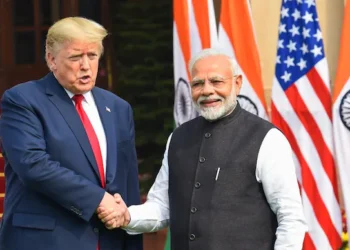The recent cross-border attacks by Pakistan and the Tehrik-e-Taliban Pakistan (TTP), supported by the Afghan Taliban, have increased tensions between the two neighboring countries. Historically, prior to the Taliban’s resurgence in August 2021, Pakistan served as a strategic partner to the Taliban. Pakistan offered refuge, training, and logistical support during the Taliban’s battle for power, thus securing a strategic presence in the area.
The dynamics after 2021 have shifted significantly, with rising tensions and adversarial relations stemming from differences in politics, territory, and strategic security. Although Pakistan viewed the Taliban’s comeback as a possible strategic victory, the consequences have shown a different reality. The profound divisions in their relationship, divergent interests, and the Taliban’s claims of autonomy and nationalism have turned their partnership into a hostile rivalry, leading the two countries into conflict.
Spectrum of Broken Bonds
The Durand Line Dispute:
The Durand Line, a border established during colonial times between Afghanistan and Pakistan, continues to be a major source of disagreement. This boundary separates Pashtun tribes across the two countries and has been contested by Afghanistan, leading to cross-border conflicts.
For Pakistan, the Durand Line represents its sovereignty and territorial integrity, especially in areas such as Khyber Pakhtunkhwa and Balochistan, where Pashtun nationalism is firmly rooted. In reply, Pakistan has strengthened its Afghan border with fencing to prevent cross-border militancy, smuggling, and infiltration—a tactic modeled after its fencing along the Line of Control with India.
The Taliban, on the other hand, dismissed the fencing, considering it a violation of Afghanistan’s sovereignty and a danger to the solidarity of Pashtun communities. Fighting between Afghan and Pakistani forces at the border has grown, heightening cross-border conflicts.
The Taliban’s Move Towards Governing Body:
The Taliban’s shift from an insurgent organization to a governing body has increased awareness of Afghan nationalism and sovereignty. Pakistan’s strategic effort to establish the Taliban as a proxy partner and gain a prominent position is seen as meddling in Afghanistan’s domestic matters.
This nationalist position serves as the foundation of the Taliban’s foreign policy and strategy for survival. They have aimed to broaden their international connections, interacting with China, Russia, and also initiating Track 2 approaches to India. Pakistan, apart from its shared borders and religious connections, currently has minimal ability to aid in the development of Afghanistan.
Pakistan has used Taliban as a strategic tool against India
Pakistan has also faced allegations of employing the Taliban as a strategic tool against India to address the Kashmir issue secretly.
Organizations such as Jaish-e-Mohammed and Lashkar-e-Taiba (LeT) functioned with implicit backing, acquiring training in regions under Taliban control during the 1990s and 2000s.
Nonetheless, this proxy escapade of Pakistan appears to have blown up in its face. It has led to what specialists refer to as ‘Pakistan’s dual-Taliban issue’, supported by the emergence of the Pakistan Taliban or Tehrik-i-Taliban Pakistan and the Afghan Taliban seizing control in Kabul.
Tehrik-i-Taliban Pakistan (TTP), while distinct from the terrorist group in Kabul, is recognized for having an implicit agreement with the Afghan Taliban. Pakistan asserts that the Kabul Taliban is reluctant to act along the porous Afghanistan-Pakistan border, which is complicating matters.













